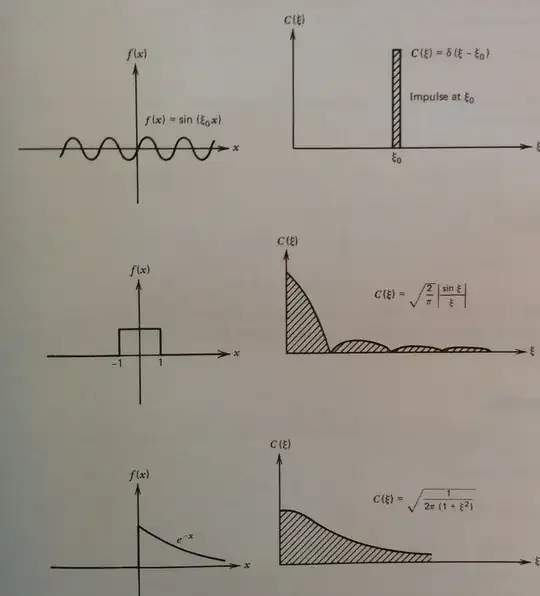In a PDE book I'm reading, the author introduces the Fourier transform by first introducing the Fourier series, and then the Fourier integral representation of a function. The Fourier integral representation is given by
$$f(x)=\int_0^{\infty}a(\xi)\cos(\xi x)\mathbb d\xi +\int_0^{\infty} b(\xi)\sin(\xi x)\mathbb d\xi$$
where
$$a(\xi)=\frac 1{\pi}\int_0^{\infty}f(x)\cos(\xi x)\mathbb dx$$
$$b(\xi)=\frac 1{\pi}\int_0^{\infty}f(x)\sin(\xi x)\mathbb dx$$
Now, the frequency spectrum $C(\xi)$ of a function $f(x)$ is defined as
$$C(\xi)=\sqrt{a^2(\xi)+b^2(\xi)}$$
The author proceeds to give some examples, shown below:

Now, while I understand this mathematically, my intuition is severely lacking. My question is:
What is an intuitive way to think about the frequency spectrum of a function?